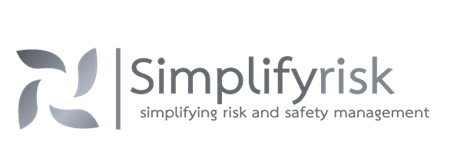
Safety management systems help protect your business and your workforce
Safety management systems help organisations to continually improve their health and safety performance by establishing and applying principles, processes and an overarching framework to assist with the prevention of accidents, injuries and to minimise other risks.
We help businesses develop safety management systems aligned to their needs
We help businesses develop safety management systems that are aligned to their needs, this typically includes addressing risk and compliance requirements but often extends to aligning the systems with:
- Australian Standards;
- Local or Federal Government requirements;
- Specific hazards and risks relevant to the business;
- Outcomes of audit recommendations; or
- Tender specifications and standards.
We also have the capability to assist with implementation planning and execution.
What is a safety management system
A safety management system is a systematic approach to managing health and safety which includes organisational and risk management structures, accountabilities, consultation arrangements, policies, procedures and safe systems of work. An effective safety management system is scalable so it can be tailored to the size and complexity of the business.
Benefits and return on investment
When it comes to safety management systems you basically get out what you put in. Successful systems require careful planning, workforce consultation and inclusion, alignment to risks, progressive implementation and continuous improvement.
There are many benefits of an effective safety management system including:
- Providing a structure to prevent, control and respond to health and safety risks;
- Develop a workforce health and safety culture;
- Create safer work environments through effective risk management;
- Reducing injuries, injury-related costs and premiums and boosting productivity;
- Improving business opportunities by demonstrating structured safety management;
- Providing measurable systems that can verify health and safety performance;
- Demonstrating due diligence and that the organisation is meeting legal requirements; and
- Protecting the organisation’s reputation.
Research shows that there are clear links between good health and safety management systems and long-term business efficiency and workforce moral.
Structure and key elements of the safety management system
Whilst every safety management system should be developed and tailored to the business it is intended to serve, a consistent framework and structure is applied as the starting point to ensure a consistent approach, this typically includes:
Leadership and worker participation:
- Leadership and commitment
- Health and safety policy
- Roles and responsibilities
- Consultation and participation of workers
Planning:
- Health and safety strategy, objectives and targets
- Identification of risk and opportunities
- Addressing legal and other requirements
- Implementation plan
Support:
- Resources
- Awareness, training and competency
- Internal and external communication
- Document control
Operation:
- Hazard and risk management
- Targeted risk management
- Safe systems of work and procedures
- Change management
- Procurement and contractor management
- Emergency preparedness and response
Performance and evaluation:
- Performance reporting
- Audit and assurance
- Management review
Improvement:
- Incident management
- Corrective action and continuous improvement
Why co-design and staff engagement is crucial to successful systems
Safety management systems are intended to protect businesses and their people so it makes sense to include, engage and co-design these strategies with the people they are intended to serve.
Although businesses often have the right intensions to establish fit for purpose systems, they often do this in isolation and overlook this critical step which often results in:
- Implementation challenges, delays or failures
- Minimal uptake in identified risk control plans
- Stakeholder disconnection, disengagement and silos
- Inability to transition beyond compliance to a proactive and preventative state
Businesses that do prioritise engagement and co-design with their staff and key stakeholders benefit from a collective and consolidated input on safety priorities, management and control strategies. This approach fosters a positive connection with safety management and enables:
- Targeted safety strategies and systems to be established
- Capacity building through inclusion
- Increased likelihood of success
- Proactive and preventative approaches to the management of safety risks
Leadership in risk, safety and management consulting
Simplifyrisk has worked with some of Australia’s most prominent organisations including the Australian Grand Prix Corporation, Netball Australia and the Australian Red Cross.
Our ability to simplify the complex, facilitate change and tailor our approach to our clients’ needs is what we are known for and the reason our clients continue to engage us.
Our staff are seasoned risk management, health and safety and management consulting professionals having worked across a wide range of business sectors for over 15 years.
Sector experience includes:
- Government
- Insurance
- Agribusiness
- Major events and sports
- Tourism and hospitality
- Marketing and entertainment
- Not-for-profit and community
- Telecommunications
- Assets and facilities
- Manufacturing
- Roads and infrastructure
- Construction
We pride ourselves on being flexible, affordable and timely in what we deliver.
Get in touch to arrange your business risk profiling session
Contact Simplify risk on 0417 895 215 or email ryankellen@simplifyrisk.com.au to discuss our services in more detail or to arrange a readiness exercise.
More information and testimonials
If you would like more information, please get in touch. If you would like to see what other organisations have to say about working with the Simplifyrisk team, refer to our testimonials page https://simplifyrisk.com.au/client-testimonials/
